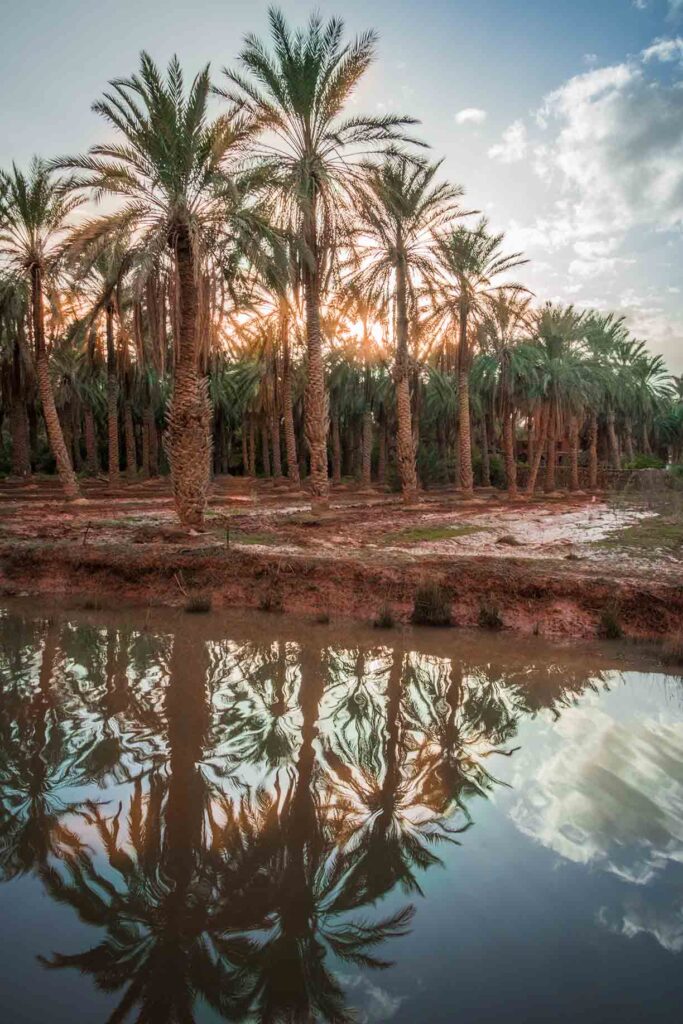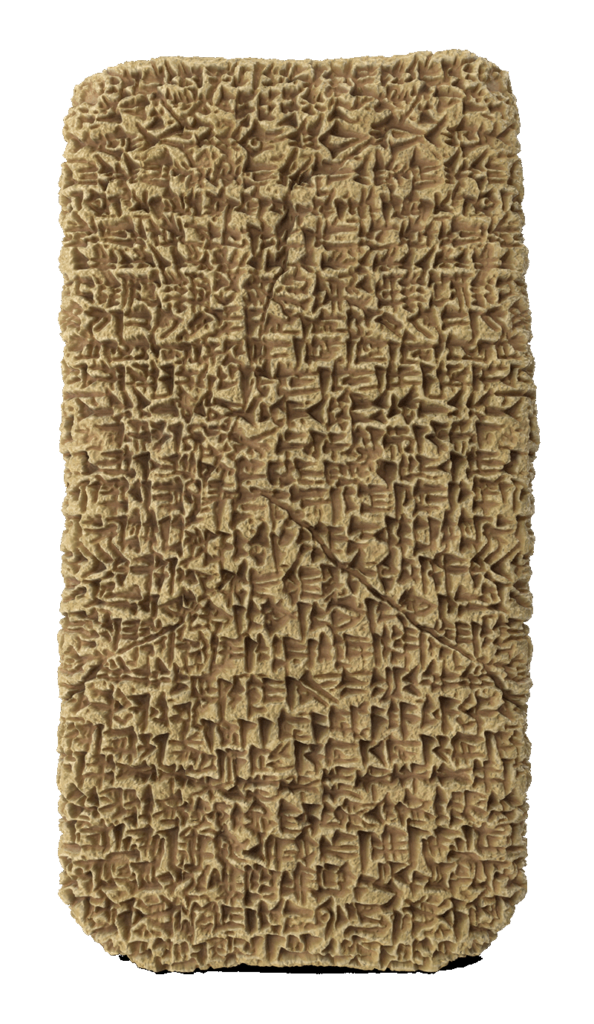Mesopotamia! A place where sand dunes danced in the wind, kings ruled with absolute power, and gods roamed the heavens like celebrities on a divine red carpet. Let’s dive into this ancient land where history echoes through time, and ponder if we’re treading a similar path today.
Now, when we talk about Mesopotamia, we’re not talking about your cozy, green countryside with gentle streams and chirping birds. Oh no, this was the desert, my friends. Visualize this: sand everywhere, as far as the eye could squint. It’s like nature went heavy-handed on the sand and forgot to add a splash of greenery.
Hold up, there’s an oasis in this desert drama! Near the rivers, life wasn’t just surviving; it was thriving. Why, you ask? Well, it’s all thanks to those clever trees who decided, “Hey, let’s block these pesky sandstorms and create a little haven of greenery.” Imagine being a Mesopotamian and finding yourself in this sandy chaos, only to stumble upon a patch of green paradise near the rivers. It’s like stumbling upon an oasis in the desert, except this oasis had a knack for saying, “No sandstorms in our backyard, thank you very much!”

So, while Mesopotamia wasn’t exactly a postcard-perfect paradise, it had its moments of natural wonder. The contrast between the sandy desolation and the vibrant life near the rivers was a testament to nature’s resilience and the ingenuity of those ancient trees. It’s these little quirks of geography that make Mesopotamia a fascinating playground for both historians and nature enthusiasts alike.
What about power and authority in Mesopotamia? Imagine a world where your destiny wasn’t in your hands but written in your birth certificate. That’s right, in Mesopotamia, your fate was sealed by birthright. Kings and queens didn’t just rule; they swaggered around like they owned the place (which, technically, they did).
And when a king or queen met their end – whether by natural causes or a well-aimed assassination – it wasn’t chaos and revolution that followed. Oh no, it was the smooth transition of power to the next in line, usually the eldest offspring. It’s like a never-ending royal soap opera, where each generation takes center stage, flaunting their power and prestige.
But don’t let the drama fool you; Mesopotamian rulers weren’t just figureheads with fancy crowns. They wielded absolute power, shaping the course of their civilization with a wave of their scepters. It was a time when authority wasn’t questioned; it was embraced with a mixture of awe and fear.

While we may marvel at the grandeur of Mesopotamian kings and queens, let’s also remember the complexities of a society where birthright determined your place in the royal pecking order. It’s a reminder that power, in any era, comes with its own set of rules and responsibilities.
Now, let’s talk business, shall we? The Babylonians, Akkadians, and Sumerians were the ancient traders of Mesopotamia, and they had a knack for bartering that would make modern-day negotiators jealous. It was like a lunchtime snack swap, but instead of sandwiches, they were trading goods like wool, grains, and steel.
“Give me some wool, and I’ll give you grains,” they’d say, striking deals that were a mix of give-and-take and strategic maneuvering. Sometimes, the trades ended with cheers and satisfied smiles, as both parties got what they wanted. Other times, it led to grumbles and negotiations that felt more like haggling over a rare artifact in a flea market.
History teaches us that unity is strength and cautions us to submerge and overcome our differences in the quest for common goals.
Haile Selassie
But amidst the trading banter, there was a sense of connection and interdependence among these ancient civilizations. They relied on each other’s resources and expertise, creating a web of economic relationships that fueled their growth and prosperity.
While we may think of trade as a modern phenomenon, Mesopotamia shows us that it’s been the lifeblood of civilizations since ancient times. The art of the deal, the dance of negotiation, and the bonds forged through trade – it’s a timeless tale that echoes through history.
Let’s talk about the gods of Mesopotamia. Imagine a celestial stadium filled with gods and goddesses, each with their own domain and fan club. From Enlil, the jack-of-all-trades god, to Utu, the sun-loving deity, the Mesopotamians had a god for every occasion.
Their pantheon was like a celestial buffet, offering a variety of deities to suit every need and whim. Need some wind and storms? Enlil’s got you covered. Want some sunshine and justice? Utu’s your guy. It was a religious smorgasbord that catered to every aspect of life, from the mundane to the extraordinary.

And their religious rituals? Oh, they were a far cry from today’s Sunday masses. Envision elaborate ceremonies, incantations, and offerings to appease the gods. It was like a mystical dance between mortals and the divine, adding a touch of mystique to their ancient ways.
We may view ancient beliefs through a modern lens, let’s not forget the rich tapestry of gods and rituals that defined Mesopotamian spirituality. It was a time when the divine was woven into the fabric of everyday life, shaping beliefs, traditions, and the course of civilization.
Now, let’s shift from gods to gears, shall we? The Mesopotamians weren’t just lounging in the sand; they were busy inventing the future! Imagine this: wheels for carts and plows for fields. It’s like they looked at the sandy landscape and said, “We can make this work better!”
Now, let’s shift from gods to gears, shall we? The Mesopotamians weren’t just lounging in the sand; they were busy inventing the future! Imagine this: wheels for carts and plows for fields. It’s like they looked at the sandy landscape and said, “We can make this work better!”
The wheel wasn’t just a round object; it was the engine of progress, revolutionizing their daily grind. Suddenly, transporting goods became a breeze, and farming went from back-breaking labor to a more efficient operation. It was like upgrading from a donkey cart to a sports car.

Do not forget the chariots, the ancient equivalent of a Ferrari in battle. Contemplate this: warriors charging into battle, chariots thundering across the battlefield like beasts of war. It was a game-changer that gave them a tactical edge and struck fear into the hearts of their enemies. Their inventions weren’t just tools; they were the building blocks of progress that shaped the course of human civilization.

How about architecture in Mesopotamia? Where building a Ziggurat was the ultimate flex. These towering structures weren’t just buildings; they were like the skyscrapers of their time, towering over the landscape and showcasing the might of kings and the craftsmanship of their builders.
Building blocks were not what we know them to be today, mud bricks were there go to. They didn’t have steel and glass; they had earth and sweat. But what they lacked in modern materials, they made up for in sheer ingenuity. These mud-brick monuments stood tall, defying the elements and standing the test of time (well, mostly).
Building a Ziggurat wasn’t just about putting bricks together; it was a statement of power and prestige. Kings wanted their Ziggurats to reach for the heavens, symbolizing their connection to the divine and their authority over the land. It was like saying, “Look at me, I’ve got the biggest, grandest monument in town!”

While we marvel at modern skyscrapers and high-tech buildings, let’s not forget the ancient marvels that paved the way. Ziggurats weren’t just structures; they were symbols of ambition, craftsmanship, and the desire to leave a lasting legacy in the sands of time.
Are you familiar with Hammurabi, the king of laws in ancient Mesopotamia. He wasn’t your average ruler; he was the king of rules, the sultan of statutes. His code, with a whopping 282 rules, made modern legal systems look like child’s play.
“An eye for an eye” wasn’t just a catchy phrase in Hammurabi’s code; it was a way of life, a principle that ensured justice was served with a side of harsh reality. If you poked someone’s eye out, well, get ready to have your own eye poked out. It was justice in its rawest, most unfiltered form.
Hammurabi didn’t mess around when it came to maintaining order and fairness in his kingdom. His code wasn’t just a dusty old scroll; it was the backbone of Mesopotamian society, shaping behavior, resolving disputes, and setting standards that echoed through the ages.
We may think of ancient laws as primitive, Hammurabi’s code reminds us that justice has always been a cornerstone of human civilization. It’s a reminder that even in ancient times, fairness and accountability were valued virtues.

As we stand in awe of the ancient wonders of Mesopotamia, it’s hard not to ponder: are we treading a similar path today? Do we have rulers as absolute as those of old? Is our trade as give-and-take, or have we lost that spirit of mutual exchange? Are our beliefs as diverse, or have we narrowed our worldview?
And let’s not forget the laws. Are they as eye-poppingly strict as Hammurabi’s code, or have we embraced a more nuanced approach to justice? These questions echo through time, reminding us that history has a way of repeating itself, albeit with a modern twist.
Perhaps, in our relentless quest for progress, we’ll encounter echoes of Mesopotamia’s triumphs and tribulations. Only time will unveil whether we’re destined to follow in their sandy footsteps or forge a new path in the sands of time.
Mesopotamia may be a distant memory, but its legacy lives on in the questions we ask, the civilizations we build, and the paths we choose to tread.
Signing off, reminding you that history isn’t just a tale of the past; it’s a road map for the future.








